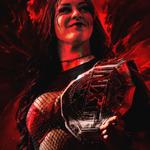 bredulino schrieb:Das Dokument wurde am 23.11. erstellt, d.h. nach der Autopsie
bredulino schrieb:Das Dokument wurde am 23.11. erstellt, d.h. nach der Autopsie
Na und? Es ist das Dokument aus dem Parkland in Dallas. Der Autor bezieht sich auf das, was er gesehen hat, so lange JFK im Parkland in Behandlung war.
 bredulino schrieb:Hier die Autopsieskizze
bredulino schrieb:Hier die Autopsieskizze
Diese sog. Autopsieskizze ist lediglich das Deckblatt (facesheet) des Autopsieberichts. Dort kann ich ja nicht mal die Kopfwunde erkennen.
Commander J. Thornton Boswell, der das Deckblatt zeichnete, wurde 1966 von The Baltimore Sun darüber befragt. Er erklärte, dass er nicht versuchte, die Verletzungen exakt maßstabsgetreu zu zeichnen und beharrte darauf, dass die von ihm vorgenommenen Messungen präzise waren. Er machte ein "X" auf einer Kopie des Deckblattes, um anzuzeigen, wo die Wunde tatsächlich gewesen war.

 bredulino schrieb:"Grob"? Es geht nicht "grob"- der Krawattenknoten vorne soll von der Kugel getroffen worden sein. Dein Austritt sitzt zu tief. Hätte die Kugel in deinem Bild nicht durch Knochen gehen müssen?
bredulino schrieb:"Grob"? Es geht nicht "grob"- der Krawattenknoten vorne soll von der Kugel getroffen worden sein. Dein Austritt sitzt zu tief. Hätte die Kugel in deinem Bild nicht durch Knochen gehen müssen?
Schon mal Krawatte getragen? Und Hemden in verschiedenen Größen? Und verschiedene Krawattenknoten ausprobiert? Wo der Knoten ist, hängt davon ab, wie eng oder locker das Hemd ist, wie eng oder locker der Knoten gebunden ist und letztlich auch, wie dick oder dünn die Krawatte ist.
Damals Anfang der 1960er Jahre trug man dünne Krawatten mit kleinen Knoten und wesentlich weniger steife Hemden als Heute. Ergo rutschte der Knoten am Hals nach unten, wenn das Hemd nicht total eng war. Und wenn man den ganzen Tag damit unterwegs ist, sollten noch zwei Finger in den Kragen passen.

Also Austrittswunde unterhalb des Adamapfels und oberhalb des Brustbeins.
Dafür, dass mein Winkel völlig willkürlich war (eine Berechnung müsste berücksichtigen: Höhe 6. Stock Schuldgebäude/Entfernung JFK vom Gebäude/Schussdistanz/Winkel des Fahrzeugs = Gefälle/Neigung des Kopfes), habe ich gar nicht so falsch gelegen.

Und diese zum 180. mal vorgeführte Skizze unterstellt einen völlig falschen Winkel des Schusses (viel zu steil). Sie geht - auch das habe ich schon x-Mal gesagt - von einem falschen Zeitpunkt des 2. Schusses aus.


bredulino schrieb:und was hat das mit den konkreten Sicherheitsmaßnahmen zu tun?




























